Some of the links in this post may be affiliate links.
Ficus benjamina, commonly known as the weeping fig plant, is a classic, yet often abused houseplant that is rarely seen in its full glory. With the tips in this post, your plant will be in top shape! Its common name comes from the plant’s elegant habit of lightly drooping branches.
Keep reading to learn all the best growing tips for this elegant plant.

Ficus benjamina is native to the tropical climates and subtropics of Asia and northern Australia. It is also widely grown in many similar climates around the world, and the tree can get up to 100 feet or so.
They are also beautiful specimens outdoors and are often pruned into hedges or into a small shrub.

Table of Contents
WEEPING FIG PLANT CARE TIPS
The care for this plant is very similar to the care of Ficus elastica, or the common “rubber plant“.
Here are 7 useful and practical tips that you can follow so that your ficus tree has its best chance at thriving in your indoor environment.
In addition to the plain green species, there are also some beautiful variegated plants.
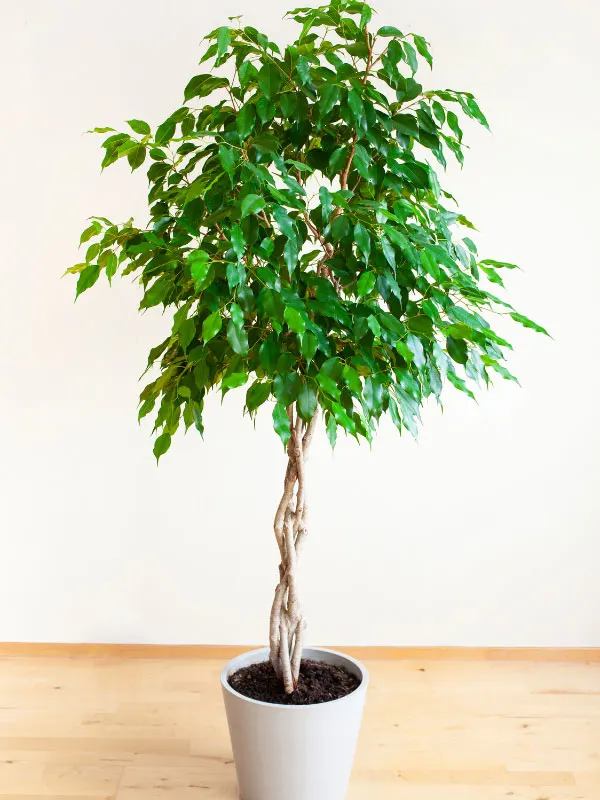
1. LIGHT
One of the very common misconceptions of caring for this plant is that it only needs “bright indirect light” and that they can not take direct sun. This is simply not true and makes no sense.
These are large trees in nature and thrive in full sun. I’ve seen many of these trees being grown in full sun outdoors in warm climates all over warm parts of California, Mexico, Europe, and elsewhere.
Light intensity indoors is much reduced compared to outdoors, so this means that we can’t really overdo the amount of light that these plants receive indoors.
For best growth, give these plants the sunniest window that you can give them indoors. They can grow in front of windows with no sun as well, but growth will not be as strong, and your plant won’t be as full.
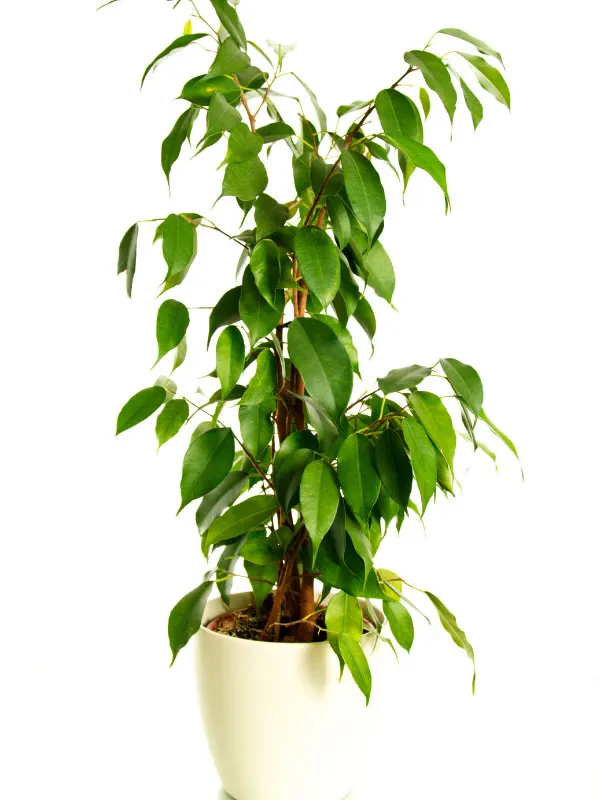
2. WATERING
Watering your ficus plant is quite simple. Ficus benjamina will protest if you let it dry out completely and will quickly develop a lot of yellow foliage which it will then drop off the plant if you allow the potting mix to dry out completely.
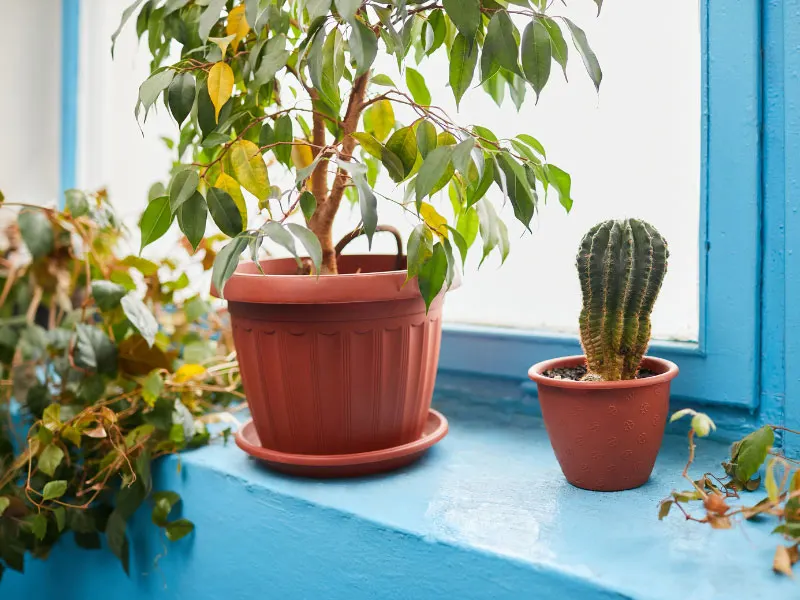
A good rule of thumb is to let the top inch or so of the potting mix to dry out before watering again. If you have a larger pot, say 8 or 10 inches in diameter or more, you can allow the top couple of inches of potting mix to dry out before watering.
Simply use your finger to judge the dryness of the soil. I strongly advise against using moisture meters since they can be very inaccurate. I’ve worked with many people that have killed their plants due to junky moisture meters reading “moist” when in fact the soil is bone dry.
Tap water is perfectly fine to use, unless you have a water softener that uses sodium which is toxic to plants.
Never allow any water to accumulate for long periods of time in the saucer under your plant (or if your plant is slipped into a decorative pot that has no drainage holes), otherwise you’ll run the risk of root rot.
Always discard any excess, accumulated water.
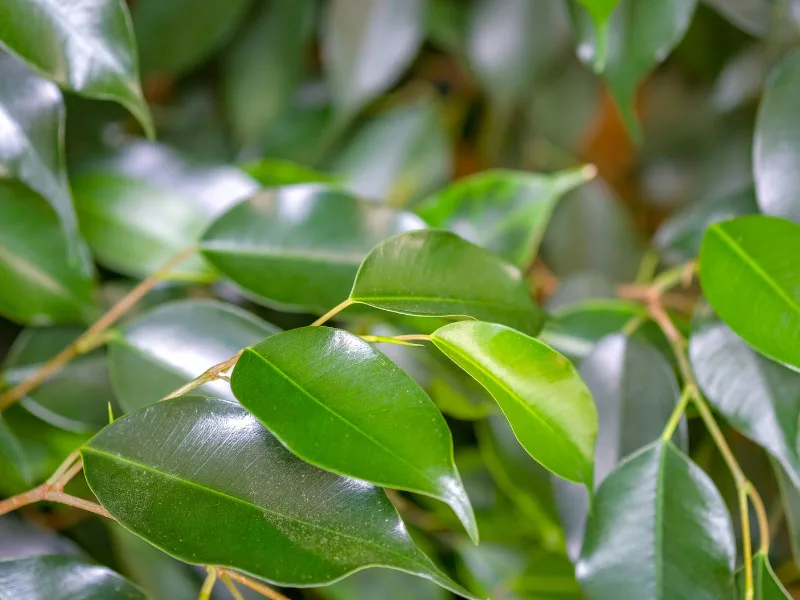
3. FERTILIZER
A good fertilizing routine is important for the health and vigor of your plant. If you don’t want to fuss much with fertilizers, you can use slow-release pellets that you can mix into your potting mix, such as Osmocote (link to Amazon).
You would simply mix the pellets into the potting mix (preferable at the beginning of the growing season), and each time you water, they will slowly release a little fertilizer. They last for a few months so this is an easy method to fertilize.
You can also use a good liquid fertilizer. My favorite is Dyna-Gro Grow (link to Amazon). It is a premium fertilizer and it contains all of the macro and micronutrients that plants need to thrive.
I prefer to fertilize with each watering by adding 1/4 to 1/2 teaspoon of to a gallon of water.
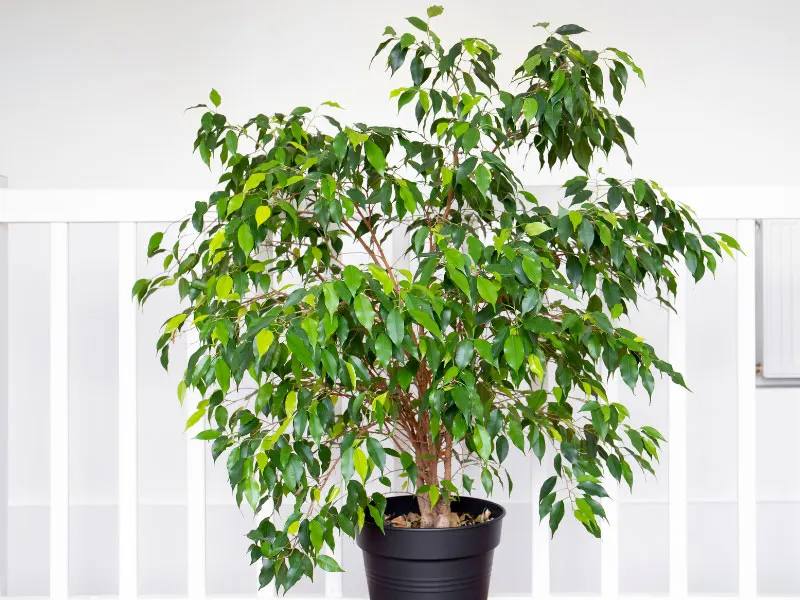
4. SOIL MIX
Your Ficus benjamina plant isn’t too picky with soil mix as long as it’s well-drained.
A good all-purpose potting mix is 3 parts of a good indoor potting mix (Miracle-Gro or Espoma make great ones) mixed with 1 part of either perlite or pumice for added porosity and drainage.
There are some pros and cons of using perlite vs pumice.
If you’re looking for an amazing potting mix that you can use straight out of the bag for your Ficus, check out the Rainforest Soil Blend from Oh Happy Plants. This is an amazing mix and you will get 10% off at checkout automatically if you use my link.
5. POT SIZE
When it comes time to repot your Ficus, a good rule of thumb is to only go up one pot size. For example, if your plant is in a 6-inch diameter pot and it’s root bound, only go up to the next larger pot size which is an 8-inch diameter pot.
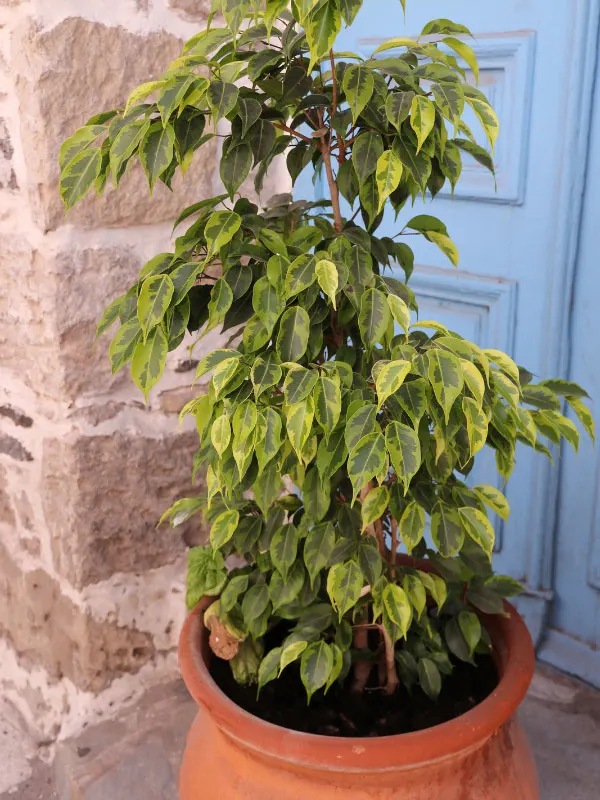
6. TEMPERATURE & HUMIDITY
As far as temperature goes, if you are comfortable indoors, your Ficus benjamina will be comfortable too. Try and maintain temperatures of 55°F (13°C) or higher, with 60-85°F (16-29°C) being a good growing range for your plant.
They do appreciate higher humidity but will be tolerant of average, indoor humidity levels.
One important thing to remember about these plants is that they are quite sensitive to abrupt changes in temperatures and humidity, and also to being physically moved. They will respond by dropping their leaves.
7. PROPAGATION
It is very easy to make new plants by simply taking small cuttings and placing them in water. Make the cuttings no larger than about 6 inches or so.
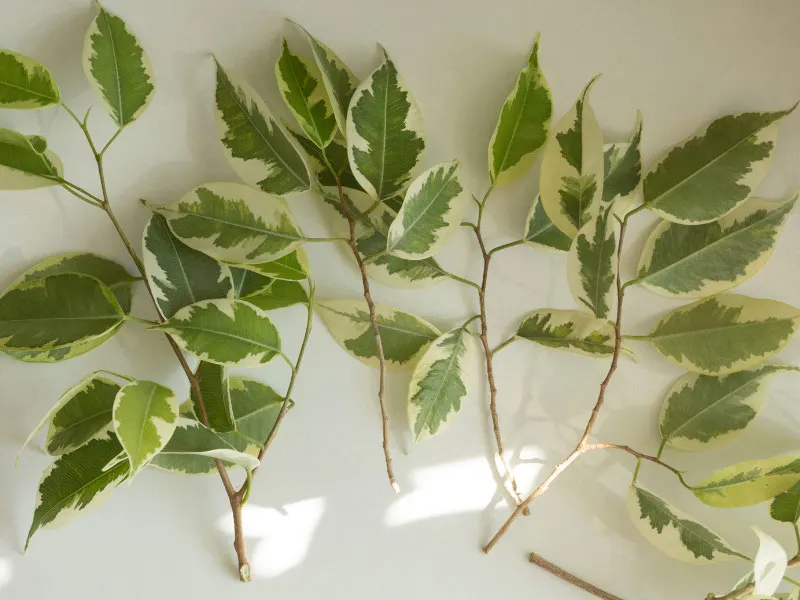
Please note that when you snip off cuttings, the plant will ooze a white, milky sap. This can irritate your skin, so be sure to wash your hands if you get it on your hands.
Then simply remove the lower leaves in the cuttings, place the cuttings in a glass or jar of water, and place the container in a bright spot in front of a window, and wait for the roots to grow.
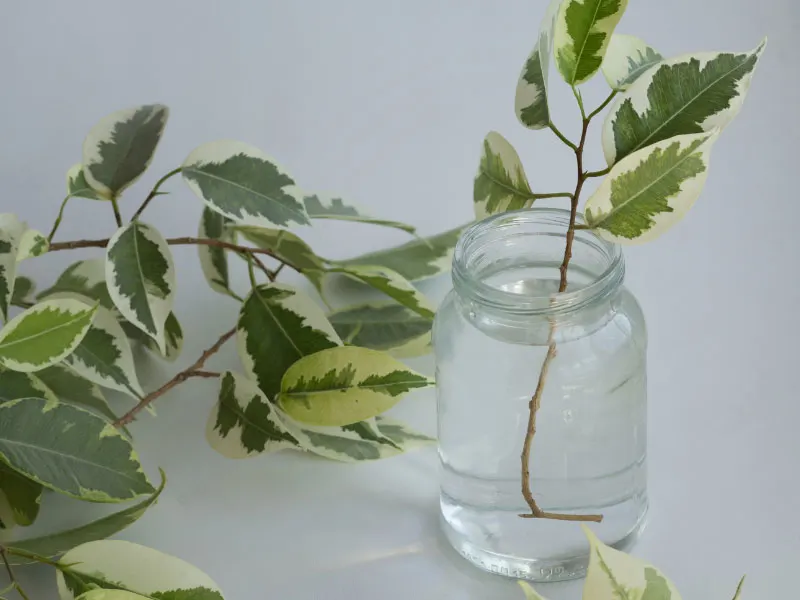
When the roots start to grow, they will appear a little odd, like little white nubs. As they grow longer, they will look more like typical roots. Once the roots are about an inch long or so, you can pot them up.
I hope you’ve enjoyed this post on Ficus benjamina. Do you have a weeping fig? Comment below. I’d love to hear!


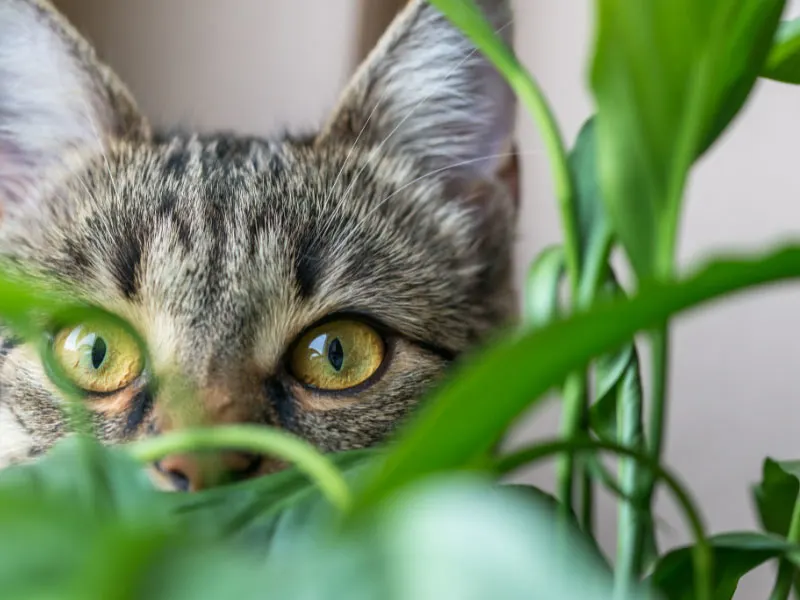
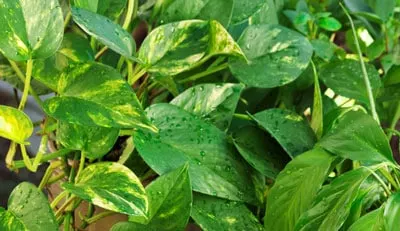
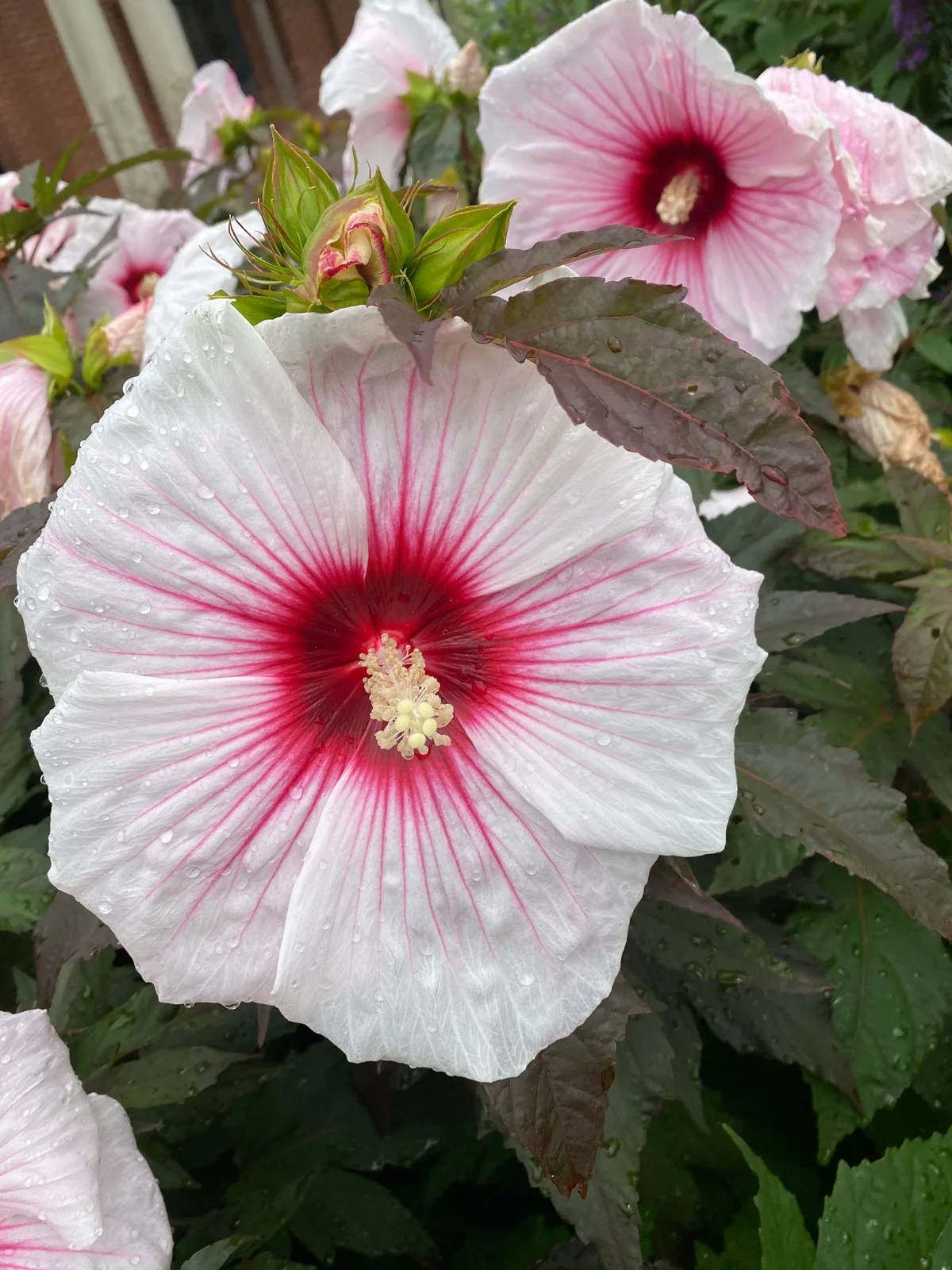
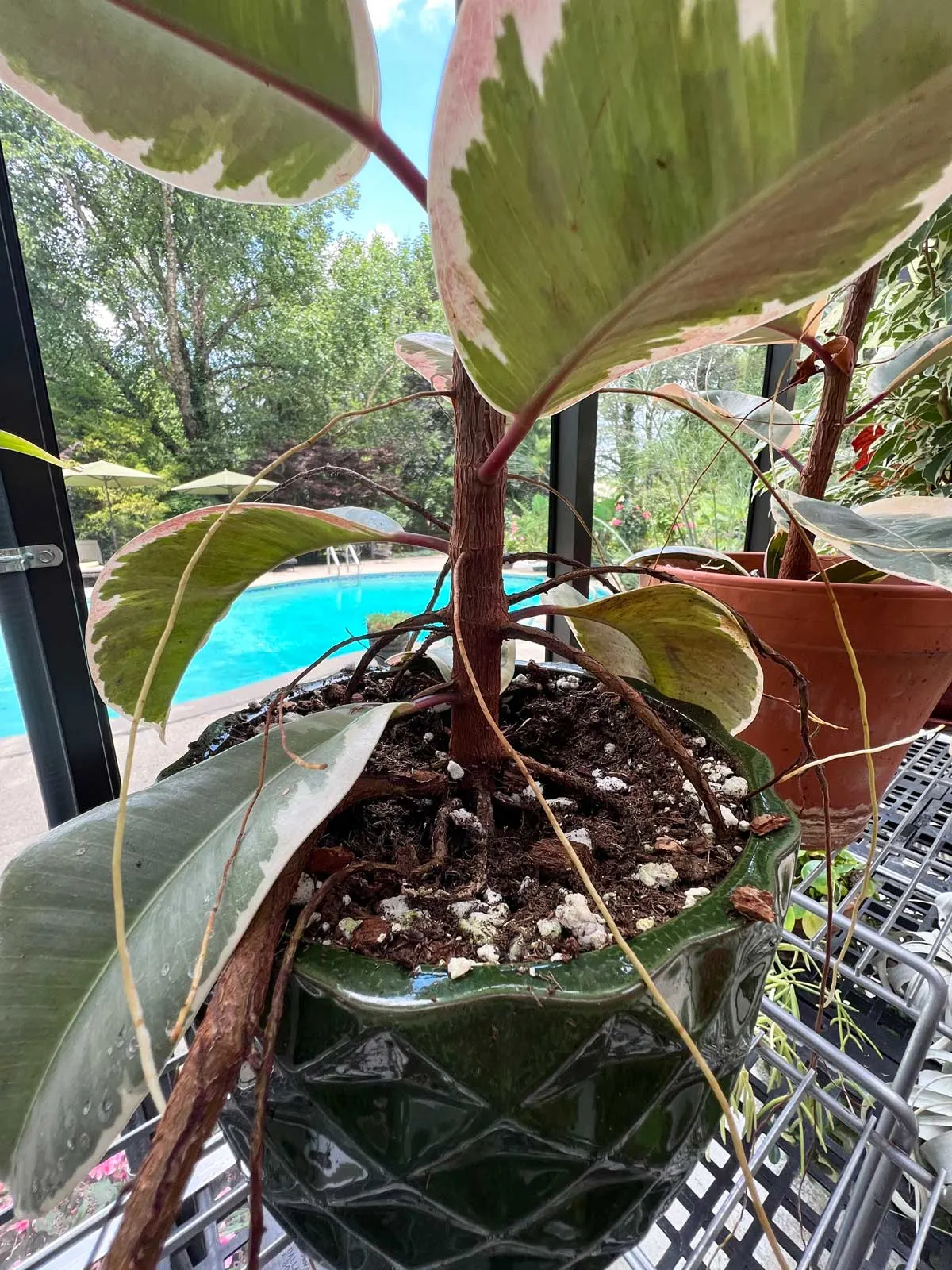
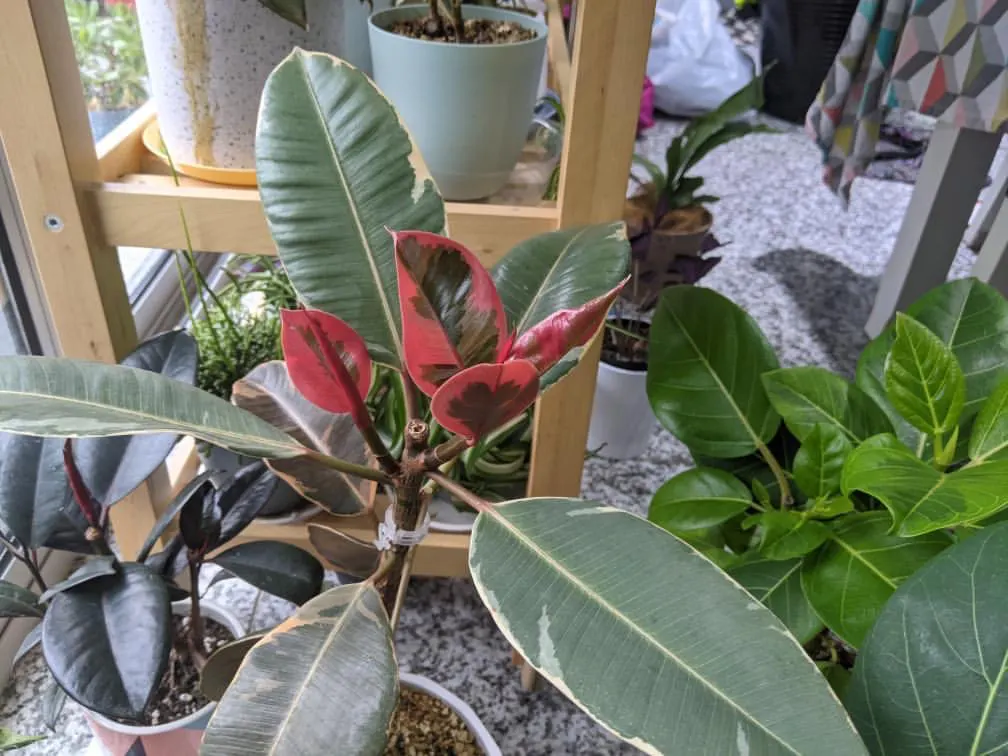
Shelia Kill
Wednesday 30th of August 2023
I have had our ficus for 37+ years. We purchased it as a very small plant when we first married. Through the years, I have taken clippings and rooted approximately 6-8 trees from the original tree and she’s still going strong. Lucy is about 9’ tall and lush, with a very temperamental attitude, she doesn’t like to be moved.
Raffaele
Thursday 31st of August 2023
I love that! Thanks for sharing. They definitely do not like to be moved, hahaha. There are some varieties now that are much better about not shedding leaves when moved. But it sounds like you have a beauty! :-)
Janell
Sunday 16th of July 2023
In have a ficus benjamin and have had it now for about 25 years. It started with just a twig. I live in Minnesota so I keep it inside for the long winter and outside for the summer where it grows tremendously. I have to prune it throughout the summer or I wouldn't fit it back in the house. It has been a fun plant to grow.
Raffaele
Monday 17th of July 2023
Sounds like you have a very happy plant! :-)